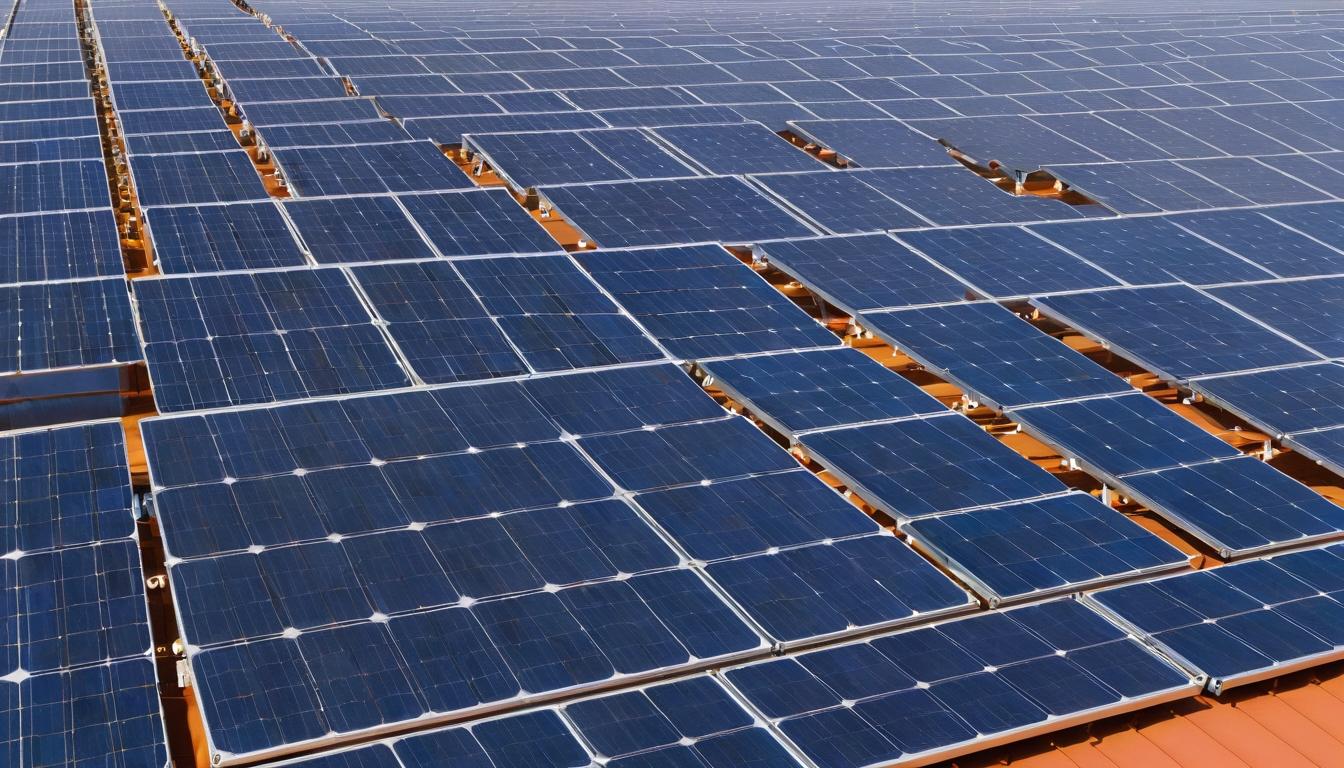Walking through the sprawling solar farms of California's Mojave Desert, you'd be forgiven for thinking you've stepped into a scene from a science fiction movie. Row upon row of gleaming panels stretch toward the horizon, their surfaces tracking the sun's movement with silent precision. But what most people don't realize is that beneath this familiar exterior lies a technological revolution that's transforming solar energy in ways that would have seemed impossible just five years ago.
While traditional silicon panels still dominate the market, a quiet revolution is happening in laboratories and manufacturing facilities worldwide. Perovskite solar cells, once confined to academic journals, are now making their commercial debut with efficiency rates that challenge conventional wisdom. These thin-film technologies can be printed like newspapers, applied to curved surfaces, and even made semi-transparent for integration into windows and building facades. The implications for urban environments are staggering—imagine entire skyscrapers generating their own power without sacrificing aesthetics.
Meanwhile, bifacial panels are turning conventional installation practices upside down. These double-sided wonders capture sunlight from both sides, harvesting reflected light from the ground or nearby surfaces. In snowy regions or areas with light-colored surfaces, the energy gains can reach 20% or more compared to traditional single-sided panels. Installers are now rethinking everything from mounting systems to site selection, creating new opportunities in locations previously considered marginal for solar development.
But the real game-changer might be what's happening behind the panels. Microinverters and power optimizers are transforming how solar systems manage energy production. Instead of connecting panels in long strings where one shaded panel can drag down the entire system's performance, these devices allow each panel to operate independently. The result? Systems that perform better in partial shade, last longer, and provide detailed performance data for every individual panel. Homeowners can now monitor their systems with smartphone apps that would make NASA engineers jealous.
The manufacturing side of solar is undergoing its own quiet transformation. While China continues to dominate production, new facilities are emerging in the United States and Europe, driven by supply chain concerns and government incentives. These modern factories are increasingly automated, using robotics and artificial intelligence to improve quality control while reducing costs. The result is panels that are not only cheaper but more reliable and efficient than ever before.
Storage technology is keeping pace with these panel advancements. Lithium-ion batteries continue to improve, but new chemistries are emerging that promise longer lifetimes, faster charging, and better safety profiles. Flow batteries, saltwater batteries, and even gravity-based storage systems are complementing traditional battery technology, creating more options for homeowners and utilities alike. The combination of better panels and smarter storage is making solar-plus-storage systems increasingly accessible to middle-class households.
Financing models are evolving just as rapidly as the technology. Solar-as-a-service arrangements, community solar gardens, and innovative leasing options are removing the upfront cost barrier that has prevented many homeowners from going solar. In some markets, you can now get solar panels installed with no money down and pay only for the electricity they produce—often at rates lower than traditional utility prices.
The regulatory landscape is shifting too. Net metering policies, which have been the backbone of residential solar economics for years, are being reevaluated in many states. While this creates uncertainty, it's also driving innovation in how solar systems are designed and operated. Time-of-use rates, demand charges, and export compensation mechanisms are becoming more sophisticated, rewarding homeowners who can shift their energy usage patterns or invest in storage.
Installation techniques are becoming faster and less invasive. New mounting systems allow for faster roof installations with fewer penetrations, reducing the risk of leaks and structural damage. Ground-mounted systems are becoming more affordable and easier to permit, opening up solar opportunities for homeowners with sufficient yard space. Even renters are getting in on the action through community solar programs that don't require physical panels on their property.
The environmental story of solar continues to improve as well. Panel recycling programs are becoming more established, recovering valuable materials like silicon, silver, and copper. Manufacturing processes are becoming cleaner and more energy-efficient, reducing the carbon footprint of panel production. And as panels become more efficient, the land and materials required per watt of capacity continue to decrease.
Looking ahead, the integration of solar with other smart home technologies promises to create truly intelligent energy systems. Imagine your solar panels communicating with your electric vehicle charger, your water heater, and your HVAC system to optimize energy usage throughout the day. These connected systems will not only save homeowners money but will help stabilize the grid by smoothing out demand peaks.
The solar industry's journey from niche technology to mainstream power source has been remarkable, but the most exciting developments may still lie ahead. With research continuing into tandem cells, quantum dot technologies, and other advanced concepts, the efficiency limits we accept today may look primitive in just a few years. The solar panels of tomorrow might generate electricity from indoor light, withstand hurricane-force winds, or even change color to match their surroundings.
What's clear is that the solar revolution is accelerating, driven by relentless innovation across every aspect of the industry. From the chemistry labs developing new materials to the installers finding better ways to mount panels on challenging roofs, thousands of people are working to make solar energy more accessible, more efficient, and more integrated into our daily lives. The future of energy isn't just bright—it's positively solar-powered.
The hidden revolution in solar panel technology that's changing everything

